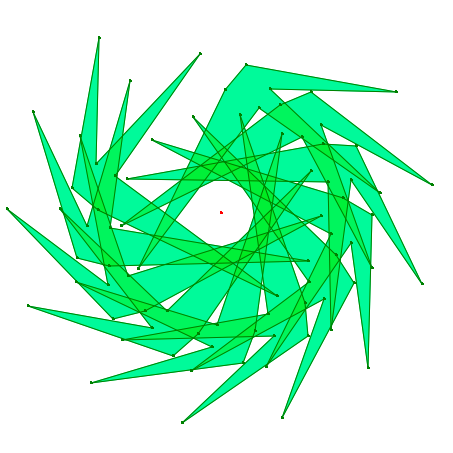Animated Questions
ICTMT 10 conference
The following page is intended as a record of ideas and resources for use during and after the session at the ICTMT 10 conference. More resources will appear here before and after the session.....
The early shift! - 8.30 - 10.00 - Friday 8th July 2011. I believe both Autograph and Geogebra will be available in the room, but if you want to use other software and/or your own laptops to solve the problems, that is fine, the problems are not software specific. Please feel free to drop in at any point during the session if you have been to other presentations or if 8.30 am is a challenge!
 Abstract
Abstract
Dynamic geometry and similar dynamic software have been a major influence on my own understanding of mathematics and consequently my own teaching. Start with the notion that all squares actually meet the minimum requirements to qualify as all other quadrilaterals1. How often does this notion upset students who somehow want rectangles and squares to be discretely different from each other? I suggest that a mathematical object or phenomenon is best described by its properties and that these properties can best be explored in a dynamic environment. The ability to bend, stretch, and explore a dynamic situation demands that we consider generalities and their limits where static representations provide us only a particular case. Why then, are so many questions in mathematics classrooms asked through a static, fixed and often printed medium? Developments in technology have prompted me to explore the setting of Animated questions where students are shown short animations of particular mathematical phenomena and asked to explore and define them by attempting to recreate them. In this workshop I propose to engage the audience with a number of examples of these animated questions exploring geometry, functions, sequences and more. In exploring the problems I hope the group is prompted to recognise the benefits of asking questions in this way in terms of exploring generality, engagement and problem solving.
I work in a school where students carry their own laptops with them at all times, which aids such experimentation, but this is not a prerequisite for being able to ask these questions. What is does do is make me increasingly curious about how long it will be before external assessment tools for mathematics will be set using technology as a medium and thus allowing a broader, more versatile style of questioning of which these Animated questions are just an example.
1. (National variations in the definition of a trapezium or trapezoid do provide an interesting challenge to this notion)
If the proposal is accepted then I will refer in the required paper to the work of John Mason and in particular his book Thinking Mathematically which was first published nearly 30 years ago. Technology is now more able then ever to help teachers encourage mathematical thinking skills in students that are every bit as relevant to the future Mathematics curriculum as they were then.
The Session
The session is billed as a 1.5 hour workshop and it is advised that participants have or are able to share a laptop with dynamic geometry and graphing software installed so as to take part in the workshop.
Aims
The aim is to demonstrate that for mathematics ICT is so much more than just a medium. Following threads from the opening keynote from Richard Noss about dynamic environments this workshop will explore a number of problems that are posed dynamically. The 'Waits' quotes about what technology has done with mathematics are relevant here. The powerful medium, the ease with which old tasks are performed and the development of new types of task. During the workshop participants will be shown a number of video animations of mathematical situations and asked to recreate them. Participants should think about the experiences they are having as they do so and the value of students having similar experiences.Having done this participants are invited to think about other questions or problems that could be posed in this way.
Dancing Quadratics
- Using only 1 dynamic constant, how is the animation above made?
- What is the equation of the line the vertex travels along?
- Could you make it travel along another line?
- Could it be made to travel along any line?
- As with the video above, what is the locus of points traced by the vertex of the quadratic?
- How then is this animation made?
- What other curved Locii could be acheived?
All made by varying only 1 dynamic constant? How?
Dr Who
The following video is one of three videos and associated tasks that can be found here Dr Who and instructions on how to make it and thoughts about how to use it with classes can be found here in the teacher notes Dr Who TN
Kaleidoscope
Here is another similar puzzle (video below) - see how this can be used with students and the questions that should be asked here Kaleidoscope and the corresponding teacher notes are here Kaleidoscope TN where you can find instructions on how this is made.
Making Waves
The following animations and associated tasks are of a very similar nature to the dancing quadratics
Magic Mirrors
Here are some more videos for transformations
Presentation
The presentation given at the conference is below as a reminder. The videos do not play within this version.
